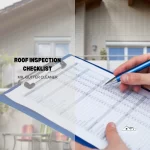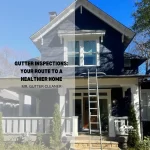Understanding the causes of roof damage is essential for effective home maintenance, addressing the core needs of homeowners seeking to safeguard their properties. Roof damage can result from a variety of factors, each interconnected with the well-being and longevity of your home. Weather conditions, such as rain, snow, and ice, directly impact roof integrity, necessitating measures to prevent water leakage and ice dams.
Similarly, prolonged exposure to sun and wind exacerbates wear, highlighting the need for durable materials and proper installation techniques. Material wear and tear over time diminish roof life, with signs like cracking, curling, and blistering shingles indicating the need for inspection and possible intervention. The installation process plays a pivotal role in roof durability; errors can lead to inadequate ventilation, among other issues, accelerating damage. Natural elements, including moss, algae, and overhanging branches, further challenge roof health, making regular maintenance and prompt removal essential.
Overflowing gutters, often overlooked, significantly contribute to roof deterioration, underscoring the importance of keeping gutters clean to prevent water damage. Regular inspection and maintenance emerge as critical preventative measures, empowering homeowners with the knowledge to undertake DIY maintenance or seek professional services when necessary.
Recognizing serious roof damage and choosing the right roofing contractor are crucial steps in ensuring roof repair and replacement are carried out effectively, preserving the home’s structural integrity and the occupants’ safety. This comprehensive approach to understanding and addressing roof damage aligns with homeowners’ central search intent, offering actionable insights and solutions tailored to home maintenance needs.
What Leads to Roof Damage
Roof damage arises from various factors, each contributing uniquely to the degradation of a home’s protective barrier. Recognizing these factors is vital for homeowners to maintain their property’s integrity and safety. The primary causes include environmental wear, material failure, installation errors, and neglect in maintenance. Addressing these issues promptly can prevent minor problems from escalating into significant, costly repairs.
Why Is It Crucial to Understand Roof Damage Causes?
Understanding the causes of roof damage is imperative for several reasons. Firstly, it empowers homeowners with the knowledge to conduct regular inspections effectively, identifying vulnerabilities before they worsen. Secondly, this awareness facilitates targeted maintenance efforts, focusing on high-risk areas to bolster roof resilience. Lastly, knowledge of damage causes informs homeowners about the necessity of professional interventions, ensuring repairs are timely and of high quality. This proactive approach minimizes the risk of extensive property damage and maximizes the roof’s lifespan, safeguarding the home against potential threats.
Table of Contents:
- What Leads to Roof Damage
- How Weather Conditions Affect Your Roof
- The Impact of Material Wear and Tear Over Time
- The Role of Improper Installation in Roof Damage
- Biological Factors: Moss, Algae, and Tree Damage
- The Impact of Overflowing Gutters on Roof Health
- Preventative Measures and Regular Maintenance
- When to Seek Professional Help for Roof Damage
How Weather Conditions Affect Your Roof
Weather conditions significantly impact roof health, subjecting it to various stresses and potential damage. Rain, snow, ice, sun exposure, and wind each play a role in deteriorating roofing materials and compromising structural integrity.
The Effect of Rain, Snow, and Ice
Rain, snow, and ice are among the leading causes of roof damage. Moisture penetration can lead to rot in wooden components, while the freeze-thaw cycle of ice exacerbates cracks and openings. Accumulated snow adds excessive weight, straining the roof structure.
Preventing Water Leakage and Ice Dams
To prevent water leakage and ice dams, homeowners should ensure adequate attic insulation and ventilation, reducing temperature differentials that cause ice dam formation. Regular gutter cleaning and roof inspections also play a crucial role in identifying and mitigating potential issues before they lead to significant damage.
Sun Exposure and Heat Damage
Continuous sun exposure deteriorates roofing materials over time, causing them to dry out, crack, and lose their protective capabilities. This degradation accelerates in regions with high UV indexes, necessitating materials with UV resistance and reflective properties to mitigate heat damage.
Wind Damage and Its Consequences
High winds can lift shingles, create openings, and expose the roof to water infiltration. Ensuring shingles are securely fastened and inspecting the roof after severe wind events can prevent wind damage from compromising the roof’s integrity.
The Impact of Material Wear and Tear Over Time
Material wear and tear significantly contribute to roof damage, with the passage of time diminishing the effectiveness of roofing materials. Environmental exposure, such as UV radiation, moisture, and thermal cycling, accelerates this degradation process, necessitating periodic evaluations to ensure the roof’s integrity.
The Lifespan of Roofing Materials
The lifespan of roofing materials varies widely depending on the type, quality, and environmental conditions to which they are exposed. Asphalt shingles, for example, can last 15-30 years, while metal roofing may last 40-70 years. Selecting materials suited to the local climate and adhering to proper installation standards are crucial for maximizing roof longevity.
Signs of Aging in Roofing Systems
Aging roofing systems exhibit distinct signs that signal the need for maintenance or replacement. These signs include but are not limited to:
Cracking, Curling, and Blistering Shingles
Cracking, curling, and blistering of shingles indicate significant aging and exposure damage. Cracked shingles become more susceptible to wind uplift, while curling edges can lead to leaks. Blistering, caused by moisture trapped in the shingle, compromises the roof’s ability to shed water effectively.
The Role of Improper Installation in Roof Damage
Improper installation is a critical factor that can predispose a roof to premature failure. Errors during the installation process compromise the roof’s structural integrity and its ability to protect the home from environmental elements.
Common Installation Mistakes
Common installation mistakes include improper shingle alignment, inadequate sealing, and failure to install flashing correctly. These errors can lead to leaks, increased susceptibility to wind damage, and other structural vulnerabilities.
Inadequate Ventilation and Its Impact
Inadequate ventilation is a significant issue that can arise from improper installation, leading to heat and moisture accumulation in the attic. This environment can cause shingles to deteriorate prematurely and increase the risk of mold and mildew growth, further compromising the roof’s structural integrity.
Long-Term Effects of Poor Installation
The long-term effects of poor installation are manifold, including increased repair costs, decreased lifespan of roofing materials, and potential damage to the home’s interior. Recognizing and addressing these installation errors early through professional assessments can prevent extensive damage and financial loss.
Biological Factors: Moss, Algae, and Tree Damage
Biological factors like moss, algae, and tree damage pose significant risks to roof integrity, accelerating wear and potentially leading to costly repairs if not addressed promptly. These natural elements can compromise a roof’s ability to function effectively as a protective barrier for the home.
How Moss and Algae Affect Roof Integrity
Moss and algae thrive in moist, shaded areas on roofs, particularly on north-facing slopes or areas with overhanging trees. Moss can retain moisture against the roof surface, leading to rot and degradation of roofing materials. Algae, while less damaging than moss, can create unsightly black streaks that may reduce the roof’s reflective properties, leading to increased heat absorption and potential damage.
The Danger of Overhanging Branches and Leaf Accumulation
Overhanging branches pose a twofold threat to roof health. Firstly, they can physically damage roofing materials through abrasion or impact during high winds. Secondly, they contribute to leaf accumulation, which can block gutters and retain moisture on the roof, fostering the growth of moss and algae and leading to additional moisture-related damage.
The Impact of Overflowing Gutters on Roof Health
Overflowing gutters are a critical but often overlooked factor affecting roof health. When gutters overflow, they can cause water to back up under roof shingles or into the roof’s structural components, leading to rot, mold, and other moisture-related damages.
Causes of Gutter Overflow
The primary causes of gutter overflow include clogs from leaves, twigs, and other debris, improper gutter installation or alignment, and inadequate gutter size or downspout capacity to handle the volume of water. Seasonal changes, particularly in autumn when trees shed their leaves, significantly increase the risk of gutter blockages.
Preventing Damage from Overflowing Gutters
Preventing damage from overflowing gutters involves regular gutter cleaning to remove debris that can cause blockages. Additionally, installing gutter guards can reduce the amount of debris entering the gutters. Ensuring gutters are properly aligned, secured, and sized appropriately for the home’s roof area and local rainfall intensity is also crucial in preventing overflow and protecting the roof’s integrity. Regular inspections and maintenance can significantly mitigate the risks associated with overflowing gutters, preserving the roof’s health and extending its lifespan.
Preventative Measures and Regular Maintenance
Preventative measures and regular maintenance are essential strategies in extending the lifespan of a roof and ensuring it continues to protect the home effectively. By proactively addressing potential issues, homeowners can avoid the escalation of minor problems into significant, costly repairs.
Regular Inspection and Maintenance Schedule
Adopting a regular inspection and maintenance schedule is critical for identifying early signs of wear and potential damage. Experts recommend inspecting roofs at least twice a year, typically in the spring and fall, to assess for damage from weather conditions and to clear any debris that may have accumulated. This routine should also include checking for loose or damaged shingles, sealing around vents and chimneys, and ensuring gutters and downspouts are free of obstructions.
Safe Practices for Homeowners
Homeowners can perform basic maintenance tasks, such as gutter cleaning and debris removal, by adhering to safe practices. These include using a sturdy ladder, wearing non-slip shoes, and having a spotter for added safety. However, tasks that involve roof repairs or inspections at significant heights should be reserved for professionals to prevent accidents and ensure thoroughness.
When to Seek Professional Help for Roof Damage
While regular maintenance can mitigate many potential issues, certain situations require the expertise of professional roofing contractors. Knowing when to call in professionals is crucial for maintaining the roof’s integrity and the home’s safety.
Identifying Serious Roof Damage
Signs of serious roof damage that necessitate professional intervention include extensive shingle loss, significant leaking, sagging, or visible light through the roof. These indicators suggest underlying structural issues that DIY efforts cannot adequately address, requiring comprehensive assessment and repair by experienced roofing professionals.
Choosing the Right Roofing Contractor
Selecting a qualified and trustworthy roofing contractor is fundamental to ensuring quality repairs and service. Homeowners should seek contractors with a solid reputation, proper licensing, and insurance to protect against liability.
Questions to Ask Before Hiring
Before hiring a roofing contractor, homeowners should ask several key questions, including details about licensing, insurance, experience with similar roofing projects, the estimated timeline for completion, and warranty information on workmanship and materials. Additionally, requesting references and quotes from multiple contractors can provide assurance of value and quality in the services provided.


